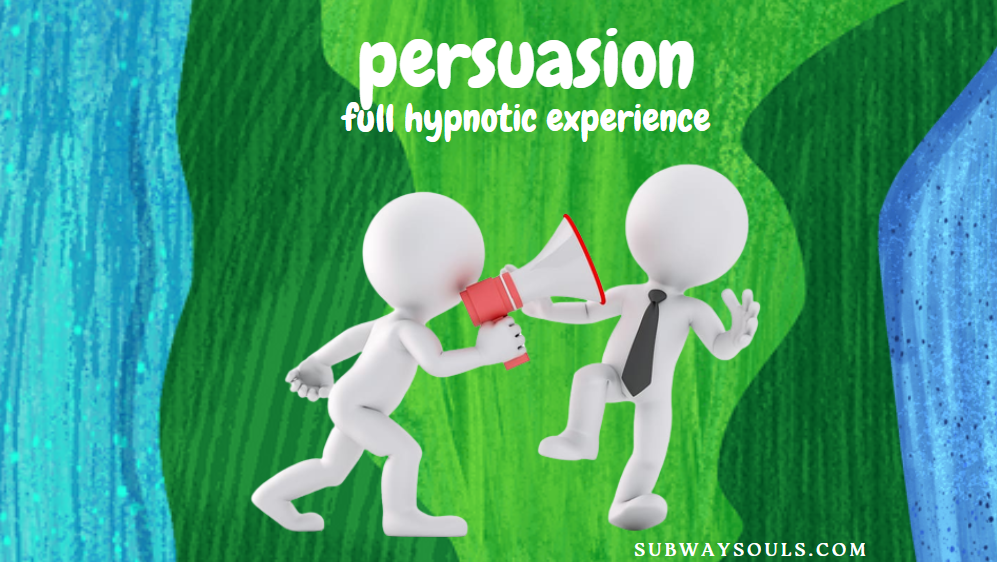I truly personally believe that being able to communicate and connect with anyone and everyone in a clear and captivating, exciting and entertaining manner can you bring you far more successes and enjoyment than old fashioned boring hard work and forced intelligence.
The best words spoken from the right mouth, attached to the perfect choice of desirable emotions will generate vibrations enough to attract anything you wish for. In my humble opinion, as deluded as it may be, some days.
There’s an old saying by Maya Angelou ‘ I’ve learned that people will forget what you said, people will forget what you did, but people will never forget how you made them feel’.
Feelings are more powerful than thoughts, and this is why all the greatest conversationalists and communicators don’t just write words and appeal to logic and lists, but attach to feelings. Charismatic communicators know how to effectively transmit feelings and when you feel every beat of the words they deliver with a glowing warmth and shower of tingles from head to toe, it’s a lot easier to fall prey to their beliefs and convictions. Once you feel so amazing and are swooning with delight, that’s the time the simple thoughts are added, to back up how you feel.
Communicating persuasively isn’t just about making logically airtight arguments, but about making your ideas emotionally compelling. All the best persuasive communicators are naturally hypnotic whether they understand the concept or not. If you feel you are not but would like to be then an understanding of hypnosis is very simple to work out. You do it to yourself daily without realising.
Attached to this blog is a hypnosis meditation session designed for you to kick back and relax and close your eyes and set your mind to a place where you can really gather those feelings of what you do best and bring them out into colourful and expressive ways of becoming the best persuasive communicator you can be.
Of course the word persuasion is often used in a negative way to describe forceful salespeople or con men. They certainly have developed the art of persuasion over the centuries but this is about using your own experiences and knowledge in influencing people gently in your day to day life. Maybe helping you with confidence to put your point across more determinedly and help garnish your self confidence and creativity.
Have a try, see how you feel after and then keep practising the exercise as often as you need to. It’s at the top of this article but to follow are some key points to consider about communication in general. This article is the basis of articles to come soon in relation to the ‘I hear voices’ podcasts.

Persuasion
Persuasion is the act of influencing someone’s beliefs, attitudes, or behaviour in order to convince them to think or act in a certain way. It involves presenting arguments, evidence, or appeals in a compelling manner to sway someone’s opinion or decision.
Effective persuasion often relies on understanding the target audience, their values, and motivations. By appealing to their interests and emotions, persuaders can increase the likelihood of achieving their desired outcome. Here are a few key principles that can enhance persuasive communication:
- Establish credibility: People are more likely to be persuaded by someone they perceive as knowledgeable, trustworthy, and reliable. Building credibility through expertise, experience, or providing evidence can enhance the persuader’s influence.
- Understand the audience: Tailoring the message to the specific needs, values, and interests of the audience can make it more relatable and compelling. By considering their perspective, the persuader can frame their arguments in a way that resonates with the audience’s beliefs and concerns.
- Use logical reasoning: Presenting a logical sequence of arguments with clear evidence and reasoning can help support the persuader’s position. Logical appeals can be convincing, especially when backed by facts, data, or expert opinions.
- Appeal to emotions: Emotions play a significant role in decision-making. By tapping into people’s emotions, persuaders can create a personal connection and motivate them to take action. Emotional appeals can include storytelling, vivid imagery, or evoking empathy.
- Use social proof: People often look to others for guidance on what to think or do. Highlighting social proof, such as testimonials, statistics, or examples of others’ behaviour, can influence individuals by showing that others have already adopted a particular viewpoint or action.
- Address counterarguments: Acknowledging potential objections or counterarguments and providing rebuttals can demonstrate thoughtfulness and strengthen the persuader’s position. Anticipating and addressing concerns can help overcome resistance or scepticism.
- Call to action: Providing a clear and actionable request or call to action at the end of a persuasive message can guide individuals towards the desired behaviour or decision. A well-crafted call to action should be specific, achievable, and compelling.
The ingredients of persuasion involve a combination of techniques and factors that can influence others’ beliefs, attitudes, and behaviours. Here are some key ingredients often involved in the process of persuasion:
- Credibility: Establishing credibility is crucial in persuasion. People are more likely to be persuaded by someone they perceive as trustworthy, knowledgeable, and reliable. Building credibility can be achieved through expertise, experience, presenting evidence, or citing reputable sources.
- Emotional appeals: Emotions play a significant role in decision-making. Persuasion often involves tapping into people’s emotions to create a personal connection and motivate them to take action. Emotional appeals can include storytelling, vivid imagery, evoking empathy, or triggering positive or negative emotions.
- Logic and reasoning: Presenting a logical and rational argument can be persuasive. Using sound reasoning, providing evidence, and making compelling arguments can help persuade individuals by appealing to their sense of logic and intellect. This includes presenting facts, statistics, expert opinions, or logical deductions.
- Social proof: People often look to others for guidance on what to think or do. Utilizing social proof involves demonstrating that others have already adopted a particular viewpoint or taken a specific action. This can be achieved through testimonials, case studies, success stories, or highlighting the popularity or acceptance of an idea or behaviour.
- Consistency and commitment: Humans have a natural desire to be consistent in their beliefs and actions. Persuasion can leverage this tendency by encouraging individuals to commit to a small action or belief that aligns with the desired outcome. Once committed, people are more likely to maintain consistency and follow through with larger requests or changes.
- Authority and expertise: People tend to be influenced by figures of authority or individuals perceived as experts in a particular field. Persuasion can involve citing respected authorities, industry professionals, or using endorsements from trusted sources to enhance the persuader’s position and credibility.
- Scarcity and urgency: The perception of scarcity or urgency can influence decision-making. Highlighting limited availability, time-limited offers, or emphasizing the potential loss or missed opportunities can create a sense of urgency and motivate individuals to act promptly.
- Understanding the audience: Effective persuasion requires a deep understanding of the target audience. Tailoring the message to their needs, values, and interests increases its relevance and impact. By considering their perspective, a persuader can frame arguments in a way that resonates with the audience’s beliefs and concerns.
- Counterarguments and rebuttals: Addressing potential objections or counterarguments can enhance the persuader’s credibility and demonstrate thoughtfulness. Anticipating and responding to concerns or scepticism shows a willingness to engage in dialogue and increases the likelihood of persuasion.
- Confidence and charisma: The persuader’s confidence, charisma, and ability to connect with others can significantly influence the effectiveness of persuasion. A confident and charismatic demeanour can attract attention, engage listeners, and make the persuader more persuasive.
It’s important to note that ethical considerations should always be prioritized when utilizing persuasive techniques. Persuasion should aim to inform and empower individuals, rather than manipulate or deceive them into making decisions against their best interests.
A conversationalist is someone who engages in conversations skilfully and adeptly. They possess the ability to connect with others, listen actively, and contribute to meaningful discussions. Being a good conversationalist involves several key qualities and techniques:
- Active listening: A conversationalist pays attention to the speaker, demonstrates genuine interest, and actively listens to what they have to say. This involves maintaining eye contact, nodding or providing appropriate non-verbal cues, and avoiding interrupting or dominating the conversation.
- Asking open-ended questions: Open-ended questions encourage the speaker to provide more detailed and thoughtful responses, fostering a deeper conversation. By asking questions that start with “what,” “how,” or “why,” a conversationalist can prompt the speaker to share more information and insights.
- Showing empathy: A skilled conversationalist demonstrates empathy by understanding and validating the speaker’s emotions, experiences, or perspectives. They express genuine concern, provide support, and avoid being judgmental or dismissive.
- Sharing personal experiences: Sharing personal stories or experiences can help create a sense of connection and foster a more engaging conversation. However, it’s important to strike a balance and not dominate the discussion by talking excessively about oneself.
- Being knowledgeable and well-informed: A conversationalist is knowledgeable about a wide range of topics or possesses in-depth knowledge in specific areas. This allows them to contribute meaningful insights, provide interesting information, and engage in intellectually stimulating conversations.
- Being respectful and inclusive: A skilled conversationalist respects diverse opinions and perspectives, even when they differ from their own. They create an inclusive environment where everyone feels comfortable expressing their thoughts without fear of judgment or ridicule.
- Practising conversational flow: A conversationalist maintains a natural flow in the conversation by building upon the speaker’s points, offering relevant comments or observations, and avoiding abrupt topic shifts. They ensure that the conversation progresses smoothly and dynamically.
- Non-verbal communication: Non-verbal cues such as facial expressions, body language, and tone of voice can significantly impact the effectiveness of a conversation. A conversationalist pays attention to their own non-verbal signals and reads those of others to maintain a positive and engaging atmosphere.
- Flexibility and adaptability: Being adaptable to different conversational styles and adjusting one’s communication approach based on the situation or the preferences of the other participants is an important skill. This helps create a comfortable and harmonious conversation.
- Enjoying the process: A conversationalist genuinely enjoys the act of conversation. They appreciate the opportunity to connect with others, exchange ideas, and learn from different perspectives. Their enthusiasm and positivity contribute to an enjoyable and enriching conversation for all participants.
Becoming a skilled conversationalist takes practice and a genuine interest in others. By developing these qualities and techniques, one can improve their ability to engage in meaningful and fulfilling conversations. But also its a load of fun too, just messing around with people with silly words and stupid stories. It doesn’t matter how old you are, play and enjoy. Make each other giggle and shriek and feel like children again. Its a super memory to look back on. You probably won’t remember what you were talking about but you will remember how much you laughed.

